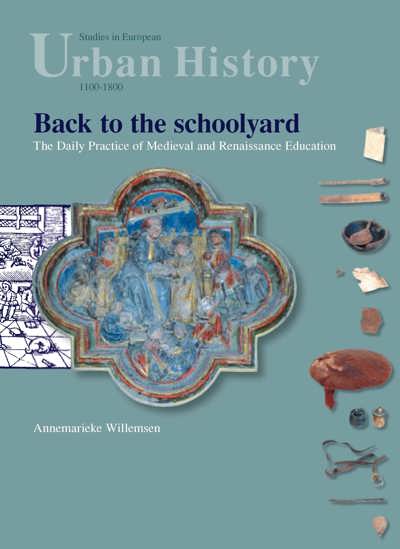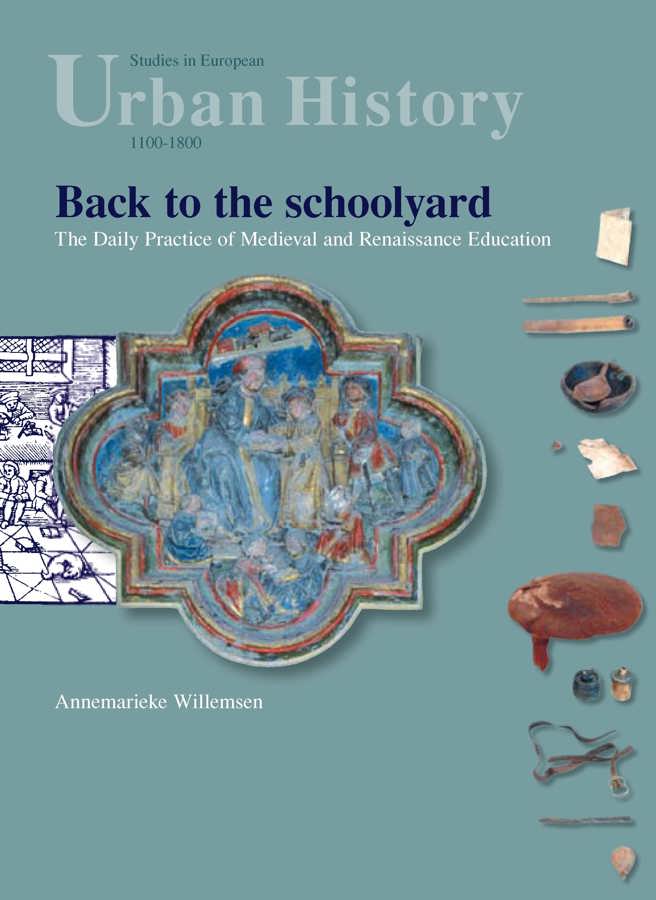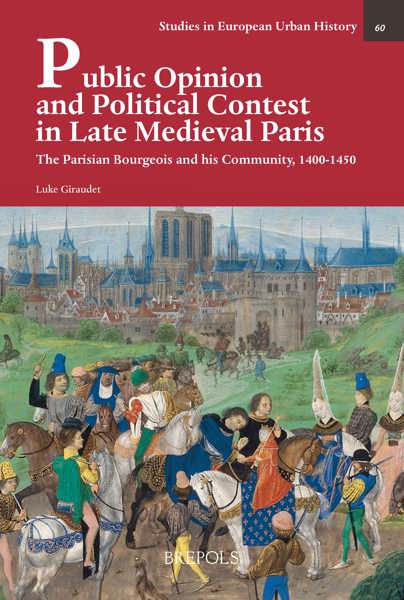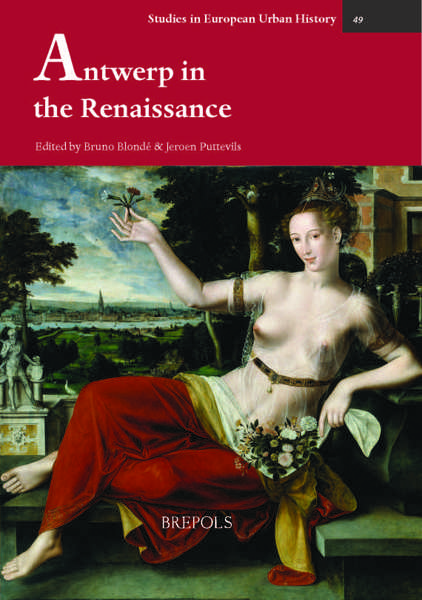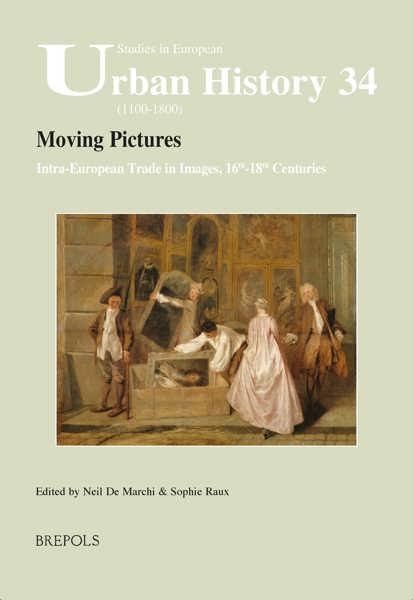
Back to the Schoolyard
The Daily Practice of Medieval and Renaissance Education
Annemarieke Willemsen
- Pages: 324 p.
- Size:180 x 250 mm
- Illustrations:265 col.
- Language(s):English
- Publication Year:2008
- € 70,00 EXCL. VAT RETAIL PRICE
- ISBN: 978-2-503-52599-0
- Paperback
- Available
- € 70,00 EXCL. VAT RETAIL PRICE
- ISBN: 978-2-503-55943-8
- E-book
- Available
Medieval and Renaissance schools have been studied before, but never from the perspective of those who experienced it on a daily basis. Recent excavations on the sites of late-medieval schools and boarding houses revealed the objects used by pupils and teachers for reading, writing, mathematics, and school life in general. Combining those finds with texts and hundreds of depictions of school scenes in manuscripts, frescoes, sculpture, stained glass and early prints, the practice of education could be reconstructed. The book gives a detailed overview of the material school culture, allowing a rare glimpse into a late-medieval classroom.
Dr. Annemarieke Willemsen (1969) is art historian and archaeologist and works as curator of the medieval department of the National Museum of Antiquities at Leiden. Earlier she published books on Roman and medieval children’s toys.
